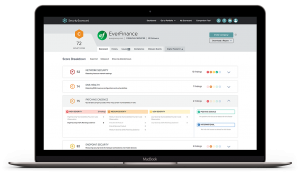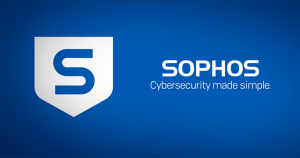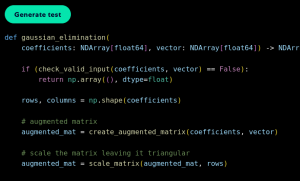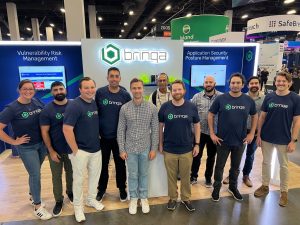SAPphire 2011: Tony Pagliarulo Talks Virtualization and Business Intelligence
![]() As the Vice President of IT at EMC, Tony Pagliarulo sits in a very interesting place when it comes to choosing what software and enterprise production will be taking EMC into the future. John Furrier and Dave Vellante interviewed him in The Cube at the SAPphire NOW 2011 conference today and asked him a few questions about what he sees the next steps in the industry will be and some of his answers have been intriguing.
As the Vice President of IT at EMC, Tony Pagliarulo sits in a very interesting place when it comes to choosing what software and enterprise production will be taking EMC into the future. John Furrier and Dave Vellante interviewed him in The Cube at the SAPphire NOW 2011 conference today and asked him a few questions about what he sees the next steps in the industry will be and some of his answers have been intriguing.
EMC has been a big customer of SAP and Oracle as well (although these two are bitter rivals) in their journey into the private cloud. According to Pagliarulo, virtualization is key to dominating the private cloud and thus is fundamental to the first step of approaching that goal.
“We have been on a long journey,” Pagliarulo said following a question about the private cloud from Furrier. “We set a target of 100% virtualization. Virtualization is key for getting into the private cloud. But it’s only one step, private cloud is all about enabling the business and driving results. App layer, middleware, reporting, and we’re virtualizing every tier in the stack.”
According to Pagliarulo, much of the need to push into virtualization of each tier rests on the integration of legacy applications (which he playfully calls “craplications”) and emerging innovative technologies. Without a layer between old and new, such as Cloud Foundry and Spring, it’s difficult to knit the apps together.
He went on to how virtualization combined with innovation is also about managing risk. He retold a narrative about a recent move of a 16TB enterprise mission-critical database. This would be an example of EMC taking a pretty significant risk. A risk, Pagliarulo says, really paid off in the end.
When it comes to managing risk, he says, it’s all about always having a plan B. However, not all migrations can provide for a fall back plan, so there’s no substitute for strong communication with partners and vendors. “It’s all about having that top-down support from Joe Tucci’s team,” he said. Always stay in strong communication with your partners and have them invest in reducing the risk. Cooperation between all involved allows them to shoulder the burden of the risk and reduce the overall failure conditions.
Furthermore, he stresses, that thorough testing is no object. They’d switched from a 5-year-old Solaris-based platform with 196 CPUs to a x86 platform and thus spent a while in performance testing and as-is expected checks. Through rigorous testing and preparation they had a good idea of what they were moving into and minimized risk through good models.
There’s an old adage that most business sits in a 70/30 stasis—70% of all income goes into running the company while only 30% can be used to actually grow or transform the business. Virtualization, however, Pagliarulo believes can be a very big part of helping to break out of this stasis as it helps greatly reduce the unit cost. EMC’s capital targets haven’t changed, he said, but overhead has been reduced considerably due to virtualization. This means that there’s a lot more money available for transforming the company versus just keeping it running.
“We’re probably a lot closer to 50/50,” he said.
![]() What is Pagliarulo looking forward to out of SAP? Well, right now he’s curious about where SAP is going with their Sybase deal. Especially as SAP has a lot of virtualization territory that they could grow into and especially application mobility. However, in the end he believes that it’s going to be more about how businesses work than just the underlying technology. Much of the new alchemy of information science will revolve around people capable of translating business architecture into information architecture. SAP have maneuvered themselves into a solid position for being part of implementations that will involve the private cloud, Big Data, and business intelligence.
What is Pagliarulo looking forward to out of SAP? Well, right now he’s curious about where SAP is going with their Sybase deal. Especially as SAP has a lot of virtualization territory that they could grow into and especially application mobility. However, in the end he believes that it’s going to be more about how businesses work than just the underlying technology. Much of the new alchemy of information science will revolve around people capable of translating business architecture into information architecture. SAP have maneuvered themselves into a solid position for being part of implementations that will involve the private cloud, Big Data, and business intelligence.
“Whether you’re moving to a private cloud or implementing SAP, it’s about business change and business transformation and that’s always difficult.”
He left his peers with this parting advice:
“Number one, get the executive commitment. Number two, have a strong business case and a plan—a good, detailed plan; ensure that plan enables for rigorous testing. We have a rigorous lifecycle and management process.”
A message from John Furrier, co-founder of SiliconANGLE:
Your vote of support is important to us and it helps us keep the content FREE.
One click below supports our mission to provide free, deep, and relevant content.
Join our community on YouTube
Join the community that includes more than 15,000 #CubeAlumni experts, including Amazon.com CEO Andy Jassy, Dell Technologies founder and CEO Michael Dell, Intel CEO Pat Gelsinger, and many more luminaries and experts.
THANK YOU









